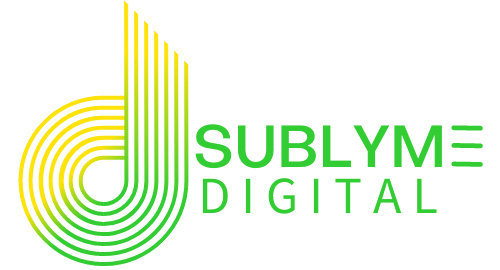
Author: Graham Davidson
Graham Davidson is the Owner and Chief Marketing Guru of Sublyme Digital, leading the agency’s remote-first approach to deliver impactful web design, SEO, and digital growth strategies for businesses across North America.
Should You Invest in In-App Advertising? Our Sublyme Guide
Quick Answer: In-app advertising on AdWords (Google Ads) allows businesses to target users inside mobile apps with tailored ads, driving brand awareness and conversions. Pros include broad reach, robust targeting, and real-time analytics. Cons include potential for ad fatigue, accidental clicks, and less creative flexibility. According to a 2020 empirical study on in-app advertising issues, user complaints often focus on ad intrusiveness and relevance, highlighting the need for strategic placement and ongoing optimization.
Key Takeaways
- In-app advertising via AdWords (Google Ads) gives businesses access to a massive, engaged mobile audience across thousands of apps.
- Pros include precise targeting, measurable ROI, real-time optimization, and the ability to reach users where they spend the most digital time.
- Cons include ad fatigue, risk of negative user experience, potential for wasted spend due to accidental clicks, and limited creative control.
- Success depends on understanding your audience, using strategic placements, and continuously optimizing campaigns based on real data.
- Business owners should weigh the unique benefits and drawbacks of in-app ads before investing, and always track performance closely.
Introduction
What is In-App Advertising on AdWords?
The Pros of In-App Advertising on AdWords
1. Massive Reach & Engagement: Mobile apps dominate digital time. Studies show users spend over 90% of their mobile time in apps, not browsers. In-app ads let you reach customers where they’re already engaged, often during moments of downtime or high attention.
2. Advanced Targeting & Personalization: Google Ads offers granular targeting—by age, gender, location, interests, device, and even app type. You can tailor messages to specific user segments, increasing the relevance and effectiveness of your ads.
3. Real-Time Analytics & Optimization: With Google’s robust analytics, you can track impressions, clicks, conversions, and in-app actions in real time. This enables continuous optimization—adjusting bids, creative, and targeting to maximize ROI.
4. Flexible Ad Formats: Choose from banners, native ads, video, interstitials, and more. Video and interactive formats often drive higher engagement, while native ads blend seamlessly with app content for a less intrusive experience.
5. Cost-Effective for the Right Audience: With smart bidding and targeting, in-app advertising can deliver strong results for businesses of all sizes. You only pay for actual clicks or conversions, making it easy to control spend and measure performance.
The Cons of In-App Advertising on AdWords
1. Ad Fatigue & User Annoyance: According to the arXiv study, one of the top user complaints is ad intrusiveness. Poorly placed or overly repetitive ads can frustrate users, leading to negative app reviews and brand backlash.
2. Accidental Clicks & Wasted Spend: Touchscreen devices make accidental clicks common, especially with poorly designed or placed ads. This can inflate click-through rates but lead to low-quality traffic and wasted budget.
3. Limited Creative Control: Some ad placements restrict your creative options, making it hard to fully customize the user experience. Native and video ads offer more flexibility, but banners and interstitials can feel generic.
4. Measurement Complexity: Attribution can be challenging, especially when tracking in-app actions or cross-device conversions. It’s crucial to set up proper tracking and use UTM parameters to understand true ROI.
5. Risk of Negative Brand Association: If your ads appear in low-quality or irrelevant apps, your brand may suffer by association. Careful app category targeting and negative placement exclusions are essential.
Holistic Search-Optimization is the strategic evolution every business needs to adopt to stay visible, trusted, and competitive in the AI-powered future of search

Maximizing the Pros, Minimizing the Cons
1. Know Your Audience & Goals: Define your ideal customer and campaign objectives. Are you driving installs, sales, or brand awareness? Tailor your targeting and creative accordingly.
2. Use Smart Targeting & Placement Controls: Leverage Google’s placement controls to avoid low-quality apps or categories. Exclude irrelevant placements and focus on apps that align with your brand and audience.
3. Test Formats & Creative: Experiment with different ad formats—video, native, banners—to see what resonates best. A/B test creative elements and messaging for continuous improvement.
4. Monitor, Optimize, and Iterate: Track performance daily. Adjust bids, targeting, and creative based on real data. Pause underperforming placements quickly to avoid wasted spend.
5. Focus on User Experience: Prioritize relevance and value. Avoid interruptive placements and frequency overload. Ads should enhance, not detract from, the app experience.
In-App Advertising—AI, Privacy, and Beyond
FAQs:
Answer: It’s the placement of ads within mobile apps through Google Ads, allowing businesses to reach users while they use their favorite apps.
Answer: Massive reach, advanced targeting, real-time analytics, flexible formats, and cost-effective results for the right audiences.
Answer: Ad fatigue, accidental clicks, limited creative control, complex measurement, and potential negative brand association.
Answer: Use placement controls, exclude low-quality apps, set frequency caps, and monitor performance closely to pause underperforming placements.
Answer: It’s most effective for brands targeting mobile-savvy audiences or promoting digital products, but can work for many industries with the right strategy.
Answer: Set up conversion tracking, use UTM parameters, and analyze both click and post-click actions to measure real business impact.
Success Stories
365 Data Centers
Discover how we rapidly rebuilt and optimized a 30-page website for 365 Data Centers, restoring their online presence and managing digital ad campaigns across key regions to drive engagement and growth.
XTECH Football Pads
Discover how we transformed XTECH Football Pads‘ digital presence, boosting their online sales and tripling website traffic through innovative website development and user experience enhancements.
BeEarth Foundation
Discover how we partnered with the BeEarth Foundation to develop a website that aligns with their mission of sustainability and global engagement. Our work has significantly increased their online visibility and engagement, supporting their efforts to promote sustainable development.
We Recycle Solar
Learn how we illuminated digital success for We Recycle Solar by completely redesigning their website to reflect their leadership in the growing solar recycling industry and implementing strategic digital advertising campaigns that enhanced their visibility at key industry events.
Preferred Home Health Care & Nursing Services
Explore how we elevated the digital presence of Preferred Home Health Care & Nursing Services by enhancing their website for better lead generation, building a dedicated site for staff recognition, and optimizing SEO for their location pages.
What Our Clients Say: Elevating Online Success
We Build Cool
Final Thoughts
Let's Build Something Sublyme
Ready to explore in-app advertising for your business? Start with a small, targeted campaign, track your results, and scale what works. Need expert help? Connect with our digital marketing team for a custom in-app ad strategy that delivers real ROI—without the guesswork.



